Dialogue and Manipulation
I.M. Jan van Toorn
Jan van Toorn died. A sudden announcement that has shocked us, even knowing his advanced age: 88. With Jan another giant of Dutch design passes. A designer who was a teacher at heart, and brilliant in both capacities.
Among his many aphorisms – carefully boiled down residues of his great erudition and his engagement with “dialogic” discussion – I want to highlight two:
“If a commissioner doesn’t know what he wants, he doesn’t get anything” (“Als een opdrachtgever niets wil, krijgt’ie niets.”). The original Dutch version is more snappy, but the gist is clear also in English: designer and commissioner are partners and co-creators, not only of the message, but also of its communicative merit and social value. Design is a dialogue, first of all between designer and client. In his work with (so: not “for”) Van Abbe Museum’s director Jean Leering, for instance, he co-authored a new approach to socially relevant communication for cultural institutions. I heard Jan’s remark in a workshop he once gave for graphic design students. There, they essentially were their own ‘commissioners,’ so Jan stressed the fact that they needed to know why what they were making mattered, and for whom. Otherwise, why bother at all?
The other maxim is famous, in various versions. This is how he once wrote it for me: “The provenance and manipulatory character of a message should be visible in its form.” (“Herkomst en manipulatiekarakter van de boodschap moeten zichtbaar zijn in de vorm.”). This, one could hold, is the essence of Jan’s mentality as a designer, as an intellectual of visual communication, as a person. Design is always manipulatory, so its recipients should be able to understand this, and weigh the motives for the manipulation and its visual expression against their own ideas. This, I think, is what Jan meant with his frequent use of the term “dialogic”: design is a dialogue between equal partners, and therefore the designer should be transparent in stating his position, thus empowering the public to do the same. Since design is a visual art as much as it is an editorial practice, the formal expression of this dialogue should be as readable as any other (verbal) information. This also means that many of Jan’s designs challenge their viewers to become readers as well. And that his best work amounts to visual literature.
Since we first met in 1984, Jan has been one of my essential informal teachers. I am happy to have had the privilege and joy of talking with him, debating, probing, exploring, discussing every conceivable aspect of visual communication and life in general while enjoying a good glass of wine. In September 2017, we invited him and his intellectual partner and dear friend Els Kuijpers to Camera Arts, the visual storytelling course at the Hochschule Luzern. Although already in his eighties, Jan impressed our students with his liveliness, energy, curiosity and dedication. Jan and Els practically ‘danced’ the workshop. I am grateful to have known him.
Illustrations: Jan and Els at Jan's studio in Amsterdam, March 2011, and Jan at Camera Arts, Luzern, september 2017. (Photos: Max Bruinsma)
... reageer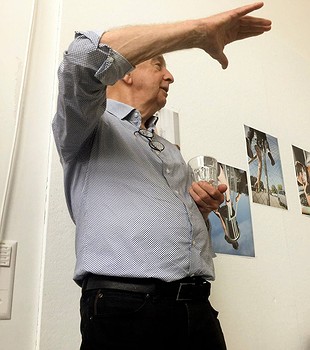
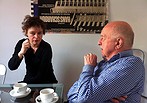
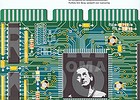
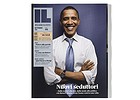
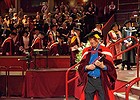
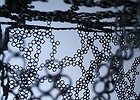
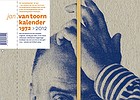
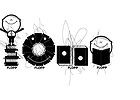




Wil je reageren op dit artikel? Stuur een mailtje naar de redactie.